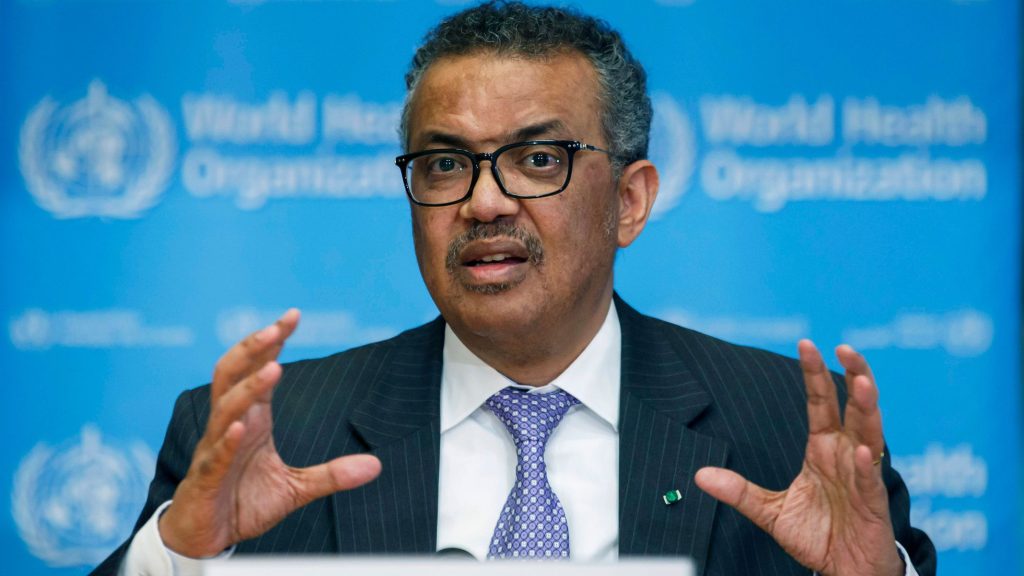Launched during the World Innovation Summit for Health (WISH), a new report, co-authored by the World Health Organization (WHO) and WISH partners, calls on governments, sports authorities, and the wider sporting community to maximize the investment and excitement generated by sports mega events and leave behind more permanent health benefits for communities. The report, Playing the Long Game; A framework for promoting physical activity through sports mega-events, recommends ways to strengthen mega sports event legacies so that they contribute more effectively to increasing physical activity, and improving the health of populations.
“Large-scale sport events are significant opportunities to promote the health and social benefits of physical activity and sport, and ensure a lasting health legacy for generations,” said Dr Tedros Adhanom Ghebreyesus, WHO Director-General. “But sports events are too often missed opportunities to produce sustainable change. The Playing the Long Game report underscores how learning from past events and better planning can lay the foundations for health and sustainable sports legacies.”
Regular physical activity, including through playing sport, is proven to help prevent and treat noncommunicable diseases (NCDs) such as heart disease, stroke, diabetes and breast and colon cancer. It also helps to prevent hypertension, overweight and obesity and can improve mental health and well-being. Increasing sport and physical activity participation can save lives, improve health and support stronger, more resilient health systems and communities.
But one in four adults and four in five adolescents are not active enough; there has been little change in the average levels of physical activity over the last 15 years.
Global sports mega events attract millions of viewers and large investments, and can make an important contribution to promoting public health messages and increasing physical activity through effective event legacy programmes. However, there is currently no global standard of what a sport event legacy should involve; requirements set by different organizing authorities for hosting events vary and there are no standard metrics to assess sport mega event legacy planning, delivery or long-term impact.
“Many cities that host sports mega events have grand plans to leverage the momentum around these events to increase physical activity and improve health. But time and again, we can’t seem to show any measurable impact – the data just isn’t there,” said Didi Thompson, Director of Research and Content, WISH.
For the first time, a framework has been presented for the design and implementation of such legacies to maximize the reach and impact on community participation in sports and physical activity. Playing the Long Game details 7 strategies to deliver meaningful sports mega event legacies which start with the planning and bidding process and extend 10 or 20 years after the event itself – promoting better health for years ahead. One recommendation is to set common key performance indicators to measure the impact across its legacy lifecycle including the design, planning, delivery/implementation and evaluation.
The framework draws on the strategic objectives outlined by WHO in the Global action plan on physical activity 2018–2030: More active people for a healthier world (GAPPA) which charts a comprehensive approach to encourage participation and behaviour change, and ultimately influence increased physical activity in all populations.
The impact of the pandemic
The COVID-19 pandemic has significantly reduced participation in physical activity and sport worldwide. It also increased depression and anxiety by 25%. COVID-19 has highlighted, more than ever, the importance of increasing efforts to engage more people in regular physical activity and sport.
Globally, NCDs cause 74 percent of deaths each year and will burden health systems and communities significantly if efforts to encourage sports and other forms of physical activity among their populations do not improve. Increases in NCDs are projected to result in an estimated US $47 trillion loss to the global economy between 2010–2030.
WHO’s Global action plan on physical activity 2018-2030 promotes active societies, people and environments to contribute to the global goal of increasing participation in physical activity by 15 percent by 2030.

